#large format filmmaking
Text
Fujifilm Japan: Fujifilm unveils the latest development roadmap for interchangeable lenses designed for the GFX Series of mirrorless digital cameras – Press release
GF 55Fujifilm unveils the latest development roadmap for interchangeable lenses designed for the GFX Series of mirrorless digital cameras
TOKYO, September 12, 2023 – FUJIFILM Corporation (President & CEO, Representative Director: Teiichi Goto) has unveiled the latest development roadmap for interchangeable GF lenses designed for the GFX Series of mirrorless digital cameras, which incorporate the…

View On WordPress
#"Fujicron" lenses#Fujifilm Fujinon GF 110mm f/5.6 T/S Macro#Fujifilm Fujinon GF 30mm f/5.6 T/S#Fujifilm Fujinon GF 55mm f/1.7 R WR#Fujifilm G-mount lenses#Fujifilm GFX cameras#Fujifilm large format#large format cameras#large format cinema lenses#large format cinematography#large format filmmaking#large format video#power zoom lenses#ultra-telephoto prime lenses
0 notes
Text
I got curious and decided to look at the technical specs on IMDB
Season one and two are shot with Leitz SUMMILUX-C lenses which are described as capturing natural colors of a scene very well. This makes SO MUCH sense especially for season one, where everything feels so much more down to earth. There would have been some color grading/correction I’m sure but I wouldn’t be surprised if at least for season one they kept it closer to the initial capture.

Season 3 is where they change lenses, which makes sense given the dramatic shift in tone and color grading that happened that season. They shoot with Leitz THALIA lenses which are described as being more cinematic. It’s focal length doesn’t go as low as the Summilux-C (which can go down to 16mm for incredibly low depth of field) but it can go up to 180mm while the Summilux-C can only go to 135mm.

Season 4 was shot on Arri Alexa Large Format camera which is apparently what is approved to shoot Netflix 4K programming. I’m not sure if they are required to use this camera, although the large formatting does match the cinematic feel that they seem to be going for with season 4. Also something interesting is that they were shooting and mixing for Dolby. Perhaps they knew ahead of time they wanted to have theatrical screenings? I think I remember the Duffers talking about wanting to have season 5 in theaters, I could see them doing that for the finale.

#byler#filmmaking things#i love learning ab this stuff#stranger things#personally the season one aesthetic is my fav but they will most likely film large format again#so either the arri alexa again or whatever upgrade that has
11 notes
·
View notes
Text




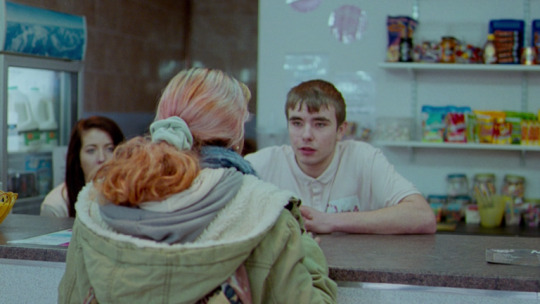


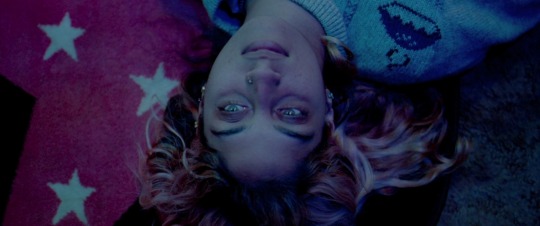
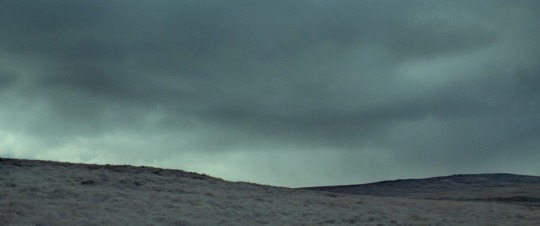
SUBLIME CINEMA #682 - CATCH ME DADDY
Robbie Ryan excelled at shooting these sorts of films before he went full tilt with Yorgos Lanthimos on the Favourite and Poor Things. His aesthetic here reminds me of his work with Andrea Arnold on Fish Tank or American Honey - a loose, dreamy quality in a naturalistic film that succeeds largely because of how well it was photographed.
Shot on 2 perf 35mm Techniscope, this format choice was an unusual one one, likely because the stock was cheap to come by. For a cinematic, striking look this format can be a good choice for filmmakers on a budget.
#cinema#film#films#cinematography#movie#film stills#filmmaking#filmmaker#cinephile#robbie ryan#catch me daddy#cannes#uk#west yorkshire#Sameena Jabeen Ahmed#Daniel wolfe#Matthew wolfe#movies#british cinema#british film#england#35mm#techniscope
15 notes
·
View notes
Text
Sci-Fi Saturday: Cosmic Voyage
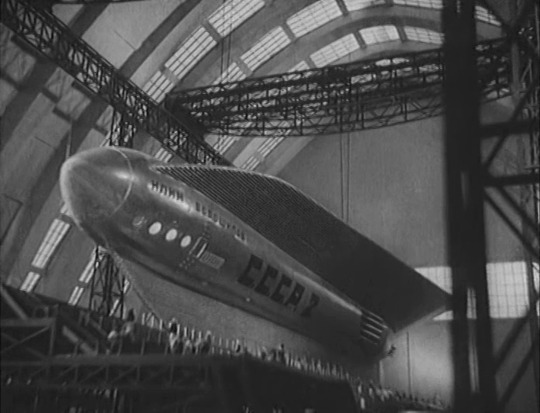
Week 17:
Film(s): Cosmic Voyage [AKA The Space Voyage] (Космический рейс, Dir. Vasili Zhuravlov, 1936, USSR)
Viewing Format: DVD
Date Watched: 2021-09-24
Rationale for Inclusion:
My partner and I are not just science fiction nerds, we're also space race history nerds. Part of the interest in watching any Soviet produced sci-fi films is better understanding the cultural context for the later real life firsts associated with Sputnik and Yuri Gagarin. As we moved into the 1950s section of the survey, we frequently found ourselves asking, "Had Sputnik happened yet?" and that milestone will no doubt be invoked when I get to that decade of films.
The other reason Cosmic Voyage [AKA The Space Voyage] (Космический рейс, Dir. Vasili Zhuravlov, 1936, USSR) was of interest when I ran across it during my titles roundup for this survey was that it is a silent film.
If you've been paying attention to this series, then you may recall that the last silent film discussed was Woman in the Moon (Frau im Mond, Dir. Fritz Lang, 1929, Germany). Histories of the Hollywood film industry have the silent film era ending in 1929, with some notable exceptions, mainly made by Charles Chaplin. In other countries their silent eras lasted longer due to the complications and expense of technical conversion and/or artists who accompanied the films not wanting to give up their jobs. In Japan, for example, silent films continued to be produced until 1939 due to katsudō benshi narrators being an essential component of the country's filmgoing experience.
In Soviet Russia, their film industry began converting to sound around 1930 and had essentially stopped producing silent films by 1935. Cosmic Voyage is an outlier largely due to its prolonged production, which began in 1932 amid the overlap of formats. The creation of futuristic sets, special effects to create the illusion of space travel, and stop motion animation sequences took awhile to create and combine in the analog era.
Once Cosmic Voyage finally was completed, it only had a brief theatrical run in 1936. In the middle of its four year production, the Soviet leadership had declared in 1934 that a doctrine of socialist realism would govern the written and visual arts throughout the Soviet Union. Having the goal "to depict reality in its revolutionary development," the censors found Cosmic Voyage with its use of special effects to be too fanciful for widespread public consumption. If they knew that pioneering rocket scientist Konstantin Tsiolkovsky had been a consultant on the screenplay, it may not have factored into the censor's decision process.
Amid cultural shifts in the 1980s, Cosmic Voyage began making the rounds at international film festivals and gradually came to film nerd consciousness.
Reactions:
Like The Woman in the Moon before it, watching Cosmic Voyage comes with the joy of how many things the filmmakers got right about spaceflight and microgravity. It also has the same narrative structure and concerns that would be oft repeated in the 1950s films about experimental space flights.
As a late silent film, unencumbered by early sound technology, the cinematography is quite wonderful, and shows off the amazing set pieces. We were particularly amused by the fact that the spaceship is effectively shot out of a rail gun. I like the symmetry of the first space flight silent film that we watched, A Trip to the Moon (Le voyage dans la lune, Dir. Georges Méliès, 1902, France), and the last one using the same means of launching their spacecraft.
Overall, Cosmic Voyage is a nice piece of cinema that straddles where spaceflight movies had been thus far, and what they would evolve into.
3 notes
·
View notes
Text
I've been waiting to watch The Outwaters since I heard about it a few months ago. I love found footage and I love cosmic horror. Mash them up and you've got yourself a stew.
I found a few days ago that it was available on VOD so I got it for $13. That's a pretty sick part of the COVID film release trend. Love when brand new horror comes out to own for the price of a movie ticket.
*SPOILERS AHEAD*

I'm going to just say the very common disclaimer: "this film is not for everyone."
A bunch of friends go out to the desert to film a music video, apparently. There are constant mysterious booms and shrieks. Desert animals exist around them. A bloody axe man chases them around and kills them. The cameraman/main character (Robbie) wakes up in a pool of blood and looks for his friends and there appears to be a time loop and maybe he's the axe man. There's an, apparently, big, practical effect creature that makes noise at him. Then he finds his dead friends' heads and cuts off his penis and disembowels himself with an animal tooth.
End.
So, if you're reading this, you're probably frustrated at how lazy and lackluster that synopsis was. Right? Now you know how I felt watching almost 2 hours of it.
I promise I will discuss WHY I feel this movie is one of, if not the biggest piece of shit I have ever watched in my life, but first, I want to dissect this movie through other people's words.
"Banfitch has a clear talent for character development, which is thrown out the window as soon as the true horror begins. Yet, getting to know his cast of characters only makes watching their annihilation more gut-wrenching in the end." - Grace Detwiler, Rue Morgue
If you think this character development is outstanding, I'm excited for you to watch literally any other movie, ever. He attempts to create the candid, real characters or Benson and Moorhead films, but they end up one dimensional, typical found footage characters. Think Paranormal Activity characters, but not even douchey enough to be interesting.
"...will likely be most effective for viewers who are strongly affected by the power of suggestion." - Grace Detwiler, Rue Morgue
Lol. I mean...yes. Correct.
"...[transforming] the found footage format into something far more transgressive..." - Meagan Navarro, Bloody-Disgusting
If the boundaries that are being crossed are "good overall filmmaking" into "bad", you're still wrong. Many found footage movies have done that. This is uniquely bad, however, so maybe there's a point there.
"...the film is more interested in immersing us than it is in answering any questions. In this regard, it completely succeeds as it spends longer and longer getting lost in the landscape that has become distorted." -Chase Hutchinson, Collider
Ok, let's talk about this, specifically.
At no point, was I immersed in this movie. The first 20 mins are the, supposedly incredible, character-building, that can really just be boiled down to the phrase, "hurr durr, you reminds me of your parents." I promise, you may relate to the dialogue between these characters, but you're better than them. Seriously. This entire build up is filmed with the tightest camera work I've ever seen. This man forgot to zoom out and he moves the camera quickly and often. You will get sick.
Then they're in the desert. The camera is slightly better because you have a vast landscape behind people most of the time, so it isn't as disorienting. But God help you, he will manage to examine every nook and cranny of a bush and the inside of their tent and the one girl's face, over and over again.
The night time shots are so much worse. Half the time, he's filming with a normal light source that illuminates a large enough area to provide tension so that you only recognize so much of what is on screen. The other half is lit by a gas station pocket flashlight using batteries from the early 2000s. I, like many other people in this day and age, have a large television. So when I have a 65" TV (1809 Sq. In.) and about 1/6 of the movie is filmed through a 3" diameter pinhole, I'm gonna be upset. The power of suggestion does not trump the power of wanting to watch a fucking movie.
Apparently, there was a large, maybe practical effect monster. Couldn't tell you, because it was filmed through this dipshit pinhole. If I spent the money to build a monster for a movie, YOU WILL FUCKING SEE AT LEAST 20% OF THAT MONSTER FOR A FEW SECONDS.
The story was run of the mill. The themes and characters were as deep as a teacup. The cinematography was fucking trash, even for found footage.
This was like a visual representation of a Chainsmokers song, but they were trying to make a black metal song, but the only black metal they've heard was Deafheaven, but the only Deafheaven they've heard was Ordinary Corrupt Human Love, but they recorded it in mono.
Also, a lot of people are comparing this to Skinamarink. Stop. Both films are frustrating and work on the power of suggestion. However, Skinamarink actually leans into the suggestion. It gives you vague pieces to tell yourself a story. Outwaters gives you a story and then lazily slops out blurry garbage that has been done better many times before over the course of almost 2 hours and then just kind of ends. I was not a huge fan of Skinamarink, but in my opinion, it is far more worthwhile than Outwaters and it's insulting to Skinamarink to conflate the two.
I will not say that I could make a feature length film. I don't have the talent or creativity. It's easier to sit and judge than to actually do something. Maybe Banfitch should take a break to reassess his influences to see what makes them worth watching, because this movie is evidence that he has missed the mark.
I hope he gets better.
If you want to watch the movie, sure, go ahead. If you want to watch something that will actually entertain and/or challenge you, might I recommend the following:
Resolution, Spring and The Endless are all wonderful pieces of eclectic cosmic horror by Benson and Moorhead. Good characters and intriguing concepts without giving away every detail.
Banshee Chapter by Blair Erickson is an incredibly underseen cosmic/conspiracy horror film that predates Stranger Things by several years, and in my opinion, does it better (horror-wise).
Bellflower by Evan Glodell is not exactly horror, but is a film that I feel Banfitch to inspiration from. The character development is on point and organic and it has sort of the mumblecore feel that I felt Banfitch was trying (and failing) to develop in the first 20 mins of his movie.
These are just suggestions that I think all do a significantly better job in every respect than Outwaters.
Just my opinions.
Thank you for listening, though I'm not sure why you would.
30 notes
·
View notes
Text

Worth noting that we're almost two weeks into 2024, and there are still two undetermined films on this year's Disney slate...
One of them is just simply "Untitled Disney", and it's set for release September 8, 2024...
The other is the annual Thanksgiving Walt Disney Animation Studios offering.
According to some screenshot of a supposed Disney movie/series slate that was floating around a month ago, Disney took both of these movies off the calendar... But I concluded, for multiple reasons, that that screenshot was fake. As it did not resemble the kind of PDF document that Walt Disney Studios Motion Pictures usually puts out when there's a change in the release schedule. The formatting was all different, and it included Disney+ shows, which these things never do.
So, I rule that the 9/6/2024 release - whatever it may be - and the 11/27/2024 WDAS movie are still on the boards. At the moment... Of course, that's always subject to change!
Disney would've kicked this year off with the Pixar space adventure ELIO in March, but that got pushed all the way back to the summer of 2025... The year instead begins with theatrical releases of the three Pixar films that went straight to Disney+ on their initial release... So the year actually begins, in terms of a NEW theatrically-released movie, with a 20th Century Studios release: Horror reboot THE FIRST OMEN. April 5th.
And earlier today, they moved their new PLANET OF THE APES movie up two weeks, to avoid duking it out with FURIOSA and GARFIELD. Plus they can get all the large-format screens to themselves for a lil' bit.
Anyways, we're in 2024 now... And we know nothing about these two movies. I'm guessing 9/6/2024 is going to be another 20th Century Studios movie, or a Searchlight movie. Sometimes "Untitled Disney" is a placeholder for that kind of movie, and September's usually the time to release one of those kinds of lower budget, more adult-oriented movies.
But we know what's been happening with WDAS' latest pictures at the box office, and who knows what morale is like over there. They too are developing shows for Disney+, like Pixar was, until Iger recently mandated cuts to Pixar after Disney+ continued to lose money for the larger company... I'd imagine WDAS might be in a similar predicament? Maybe not? But it's unusual that we don't know for sure - as in, not through leaks or word thru the trenches - what the 2024 WDAS movie is. Even STRANGE WORLD, we knew about it a year away from release... They're kinda cutting it close with this one?
Unless WDAS takes 2024 off completely, for whatever reason. I figured the very possible animation strike would affect this movie anyways. But even without a strike, their recent woes might lead to a back-to-the-drawing-board moment, as often is the case when a studio has a string of money-losers. It often leads to a week or so of everyone wondering, "What should we be doing? What kinds of movies should we be making??" And then they try that, and they see how that goes...
Anyways, should all go swimmingly, I wouldn't mind seeing the new WDAS get delayed. Especially if it's still having its kinks ironed out. Also, kind of a wild opinion, but WDAS doesn't always have to do the Thanksgiving thing, ya know? STRANGE WORLD and WISH weren't saved by that slot, neither was something like TREASURE PLANET many moons ago. WDAS did do a March release with ZOOTOPIA in 2016, and almost did that again in 2018 (at one point GIGANTIC, at another point RALPH BREAKS THE INTERNET) before abandoning it... Like, a WDAS movie doesn't always have to be the summer or the holiday season. Many other animated movies have proven that, too.
Heck, WDAS movies used to show up at the randomest times of the year. Before the world of blockbuster filmmaking, during a time when the movie theater industry was a whoooole lot different.
Did you know that SNOW WHITE AND THE SEVEN DWARFS, which had its world premiere on December 21, 1937, went into general release... In February of 1938? February. Yes, cold-ass February... And still managed to become, at the time of its release, the highest-grossing film of all time? (A record swiftly usurped by GONE WITH THE WIND a little over a year later.)
PINOCCHIO, CINDERELLA, and PETER PAN were February releases, too. DUMBO and THE JUNGLE BOOK came out near Halloween in their respective release years. BAMBI was a late August release. SLEEPING BEAUTY and 101 DALMATIANS came out in late January of their release years.
Summer slots became more of a regular thing for Disney starting with THE RESCUERS in 1977, which was a June release. THE FOX AND THE HOUND originally was eying Christmas 1980, but because of the Don Bluth-led animator exodus, ended up being a July 1981 release. THE BLACK CAULDRON, similarly, was out in July 1985. THE GREAT MOUSE DETECTIVE? July 1986.
But then once the Renaissance fired up, it was initially all about Thanksgiving. OLIVER & COMPANY, LITTLE MERMAID, RESCUERS DOWN UNDER, BEAUTY AND THE BEAST, and ALADDIN all did the holiday thing...
When THE LION KING broke all records for an animated movie in summer 1994 - the June date given to it after production problems delayed it from its original Thanksgiving 1993 slot, then Disney was all about the summer again. Barring WINNIE THE POOH (2011), the last time WDAS had a summer movie was... 2002... LILO & STITCH. From BOLT-onwards, it was almost always towards the end of the year with their movies. Again, ZOOTOPIA an exception, RAYA AND THE LAST DRAGON as well because of COVID-19 (it would've been Thanksgiving 2020 if nothing had happened).
Maybe it doesn't have to be Thanksgiving/Christmas all the time?
Suppose we see the new WDAS movie in, say, March 2025? And the next, maybe at another time of the year?
2 notes
·
View notes
Text

The young Kushar twins
1942 – George and Mike Kushar are twin gay American underground filmmaker, actors, and cartoonists. They are notable for their low-budget and camp films such as Sins of the Fleshapoids, The Craven Sluck and Ascension of the Demonoids.
When Mike and George Kuchar first got their hands on an 8mm movie camera in 1954 as 12 year old boys, no one really thought the format was suitable for anything but vacation footage, yet since then no one in America has contributed more to the craft and philosophy of personal film-making than the twin brothers from the Bronx. In a culture of hype and careerism, where "size counts", its not surprising, then, that gangly, self-effacing Mike Kuchar, the lesser well known of the two, is not in any sense famous.
They have been making innovative, if engagingly threadbare, epics since that day in 1954, when The Wet Destruction of the Atlantic Empire saw the light of day. In that case, the boys' appropriation of all available materials included their mother's nightgown. According to George, "At the age of twelve I made a transvestite movie on the roof and was brutally beaten by my mother for having disgraced her, and also for soiling her nightgown." Mrs. Kuchar's reaction was the Kuchars' first bad review, but it is a testimony to how endearing they and their work are that by the mid-1960s she was making regular cameo appearances in her sons' work. Devotees of comic books, pornography, and commercial Hollywood cinema, George and Mike tried to replicate on film what they saw in their working-class lives—or filter it through their own gay sensibilities—using their 8mm camera and whatever locations, props, friends, and families were available.
Wet Destruction was followed by many other works in the comic chaos mode, torrid two-dollar melodramas based on Kuchar favorites such as Douglas Sirk's Written on the Wind (1956). Some of the titles are as notorious as the films themselves: Corruption of the Damned (1967), Pussy on a Hot Tin Roof (1961), Hold Me While I'm Naked (1966). Many featured shoestring special effects that included floods, earthquakes, and tornadoes, rendered with stock footage, backyard assemblages, and matte paintings by the talented duo.
The Kuchars were innovative exhibitors as well, setting up informal cinema clubs to show their work, which scandalized some of the attendees with its sexual frankness, anarchistic air, laughable plots, and grade-Z special effects. Eventually members of the haute underground —Andy Warhol, Ken Jacobs, Jack Smith — took notice, and the Kuchars' films became both infamous in creating their legend and influential in showing others that neither large budgets nor good taste were necessary conditions of film art
Mike and George ended their collaborative approach to movie making in 1965 when Mike phased himself out of their first 16mm work-in-progress, Corruption of the Damned, to concentrate on a futuristic science-fiction fantasy which would turn out to be the 45-minute Sins of the Fleshapoids, and which featured George in probably his finest acting appearance as Gianbeano, the evil prince.
Although their films would always display some stylistic similarity, reflective of their common love of fifties' Hollywood melodrama and their low-budget orientation, Mike dealt more with classical or Romanesque imagery that tended to have erotic under-currents, while George would go on to pioneer a form of personal film-making that relied heavily on first-person narration and his own presence in the frame - a style which he has honed in his prolific "video-diary" output of the last decade. Mike has always taken a more off-screen role in his own films, which are just as personal but in a different way, and tend on average to be longer than George's.
George went on refining the steamy camp melodrama, using a stock company of friends, and, later, working in a diary format that allowed him to record with droll humor the nuances of his daily life and his self-proclaimed "favorite topic," Midwestern tornadoes. In the early 1970s he became a cartoonist in the underground comics scene but continued to make films. In 1975, George collaborated with the late gay filmmaker Curt McDowell for one of the underground's best-known titles, Thundercrack!, a lewd sendup of the "old dark house" genre from 1930s Hollywood, which George co-wrote and acted in.
George Kuchar's latest major work, funded by the Rockefeller Foundation, carries his obsession with earthly, fleshly things into the literal stratosphere. Secrets of the Shadow World is a 140-minute digital video epic ostensibly tracking George's attempts to make a "big UFO movie," but it is really an excuse to display the filmmaker's scintillating sensibility and eccentric gallery of friends. In a bizarre tableau that reaches the giddy heights of camp, he shows the Roswell, New Mexico alien as a sex fiend, stretched out on top of his friend Linda Martinez, who thrills to the touch of its plastic paw and moody, ovoid bedroom eyes.
Mike's work would span a range of subjects and techniques and he never established a consistent trademark style like George. Even his two major works of the sixties, Sins of the Fleshapoids and The Secret of Wendel Samson (1966), made only a year apart, are very different films. His output over the years was more sporadic and less prolific than his brother's, all of which helps to explain why George has a higher profile than Mike today. George's employment as a film teacher at the San Francisco Art Institute for almost thirty years now has also contributed to his somewhat broader recognition.
On the other hand, Mike has stayed active over the years, working on his own films and occasionally as a cinematographer on other independent productions, usually in Europe. A gifted painter and illustrator since his teens, he's derived some income from story board work and contributed to a number of gay erotic comic books.
In the past 10 years, Mike Kuchar has focused on more intimate one person expressionistic films. At the Vienna Film Festival in 2009, he unveiled two shorts, Swan Song and Dumped. Swan Song features the pain of a young man tormented by his sensuality who is painted as an animal writhing in pain, and Dumped stars veteran stage actress Deirdre McGill in a portrait of a woman engaged in a deadly love triangle.
Mike recently returned from Portugal to San Francisco's Mission District, where he shares a cheap walk-up flat with brother George.
in 1997, the Kuchar brothers collaborated on a book, Reflections from a Cinematic Cesspool (1997). It is a humorous memoir discussing four decades of filmmaking and includes an introduction by filmmaker John Waters


12 A.D. – Caligula was the popular nickname of Gaius Julius Caesar Augustus Germanicus, Roman emperor from 37 AD to 41 AD. Caligula was a member of the Julio-Claudian dynasty. Caligula's father Germanicus, the nephew and adopted son of Emperor Tiberius, was a very successful general and one of Rome's most beloved public figures. The young Gaius earned the nickname Caligula (meaning "little soldier's boot", the diminutive form of caliga, hob-nailed military boot) from his father's soldiers while accompanying him during his campaigns in Germania.
When Germanicus died at Antioch in 19 AD, his wife Agrippina the Elder returned to Rome with her six children where she became entangled in an increasingly bitter feud with Tiberius. This conflict eventually led to the destruction of her family, with Caligula as the sole male survivor. Unscathed by the deadly intrigues, Caligula accepted the invitation to join the emperor on the island of Capri in 31 AD, where Tiberius himself had withdrawn five years earlier. With the death of Tiberius in 37 AD, Caligula succeeded his great uncle and adoptive grandfather.
There are few surviving sources on Caligula's reign, although he is described as a noble and moderate ruler during the first six months of his rule. After this, the sources focus upon his cruelty, sadism, extravagance, and intense sexual perversity, presenting him as an insane tyrant. While the reliability of these sources has increasingly been called into question, it is known that during his brief reign, Caligula worked to increase the unconstrained personal power of the emperor. He directed much of his attention to ambitious construction projects and notoriously luxurious dwellings for himself. However, he initiated the construction of two new aqueducts in Rome: the Aqua Claudia and the Anio Novus. During his reign, the Empire annexed the Kingdom of Mauretania and made it into a province.
Philo of Alexandria and Seneca the Younger describe Caligula as an insane emperor who was self-absorbed, angry, killed on a whim, and indulged in too much spending and sex. He is accused of sleeping with other men's wives and bragging about it, killing for mere amusement, and wanting a statue of himself erected in the Temple of Jerusalem for his worship. Once, at some games at which he was presiding, he ordered his guards to throw an entire section of the crowd into the arena during intermission to be eaten by animals because there were no criminals to be prosecuted and he was bored.
While repeating the earlier stories, the later sources of Suetonius and Cassius Dio provide additional tales of insanity. They accuse Caligula of incest with his sisters, Agrippina the Younger, Drusilla, and Livilla, and say he prostituted them to other men. They state he sent troops on illogical military exercises, turned the palace into a brothel, and, most famously, planned or promised to make his horse, Incitatus, a consul, and actually appointed him a priest.
He assassinated at the Palatine Games by his own officers after a reign of only four years. He was noted for his madness and cruelty including arbitrary murder. His taste in men was far-reaching. In fact, his taste for anything sexual, male, female, relative, or animal seems far-reaching. One of his playmates was a priest who he enjoyed screwing in public at religious events. He forced his officers into regular sex bouts. He is reported to have made them kiss his penis in public.
In early 41 AD, Caligula became the first Roman emperor to be assassinated, the result of a conspiracy involving officers of the Praetorian Guard, as well as members of the Roman Senate and of the imperial court. The conspirators' attempt to use the opportunity to restore the Roman Republic was thwarted: on the same day the Praetorian Guard declared Caligula's uncle Claudius emperor in his place.


1922 – André Baudry (d.2018), as leader of the French homophile movement from the early 1950s into the 1980s, was the principal spokesman for homosexuals in France before the rise of gay liberation in the 1970s. Born in Rethonde, France, on August 22, 1922, Baudry grew up in Senlis, where his father was a notary. After the death of his mother, Baudry, then eight years old, was sent to a Jesuit-run boarding school in Laval. He came down with tuberculosis soon after graduation and spent the first years of World War II in hospital and then in a sanatorium in eastern France. Baudry entered the Roman Catholic seminary at Versailles in 1943, but abandoned his plans for the priesthood in late 1945 or early 1946 because of what he considered an irreconcilable conflict between his religious vocation and his homosexuality. He went on to teach philosophy in a Catholic private school in Paris until the mid-1950s.
In 1946, Baudry began frequenting a circle of conservative Catholic homosexual writers that included Roger Peyrefitte, André du Dognon, and Jacques de Ricaumont. Ricaumont introduced Baudry to the Swiss homophile review Der Kreis (The Circle). He became its French correspondent in 1951 under the pseudonym André Romane. The homophile movement, which was international in scope, disliked the term "homosexual" because it seemed to stress sex over love, whereas "homophile," as Baudry observed, more broadly "designates those persons who can find their erotic fulfilment (... physical, psychological, emotional and intellectual) only with another person of the same sex."
Baudry began holding meetings of Der Kreis's Paris subscribers in his apartment. In January 1954, he launched his own monthly periodical, named Arcadie after the mythical Ancient Greek paradise peopled by happy shepherds. Arcadie contained short works of fiction, as well as scientific, literary, and historical articles that focused on (and defended) homosexuality. Despite the review's austere tone and drab appearance (with no illustrations), the government banned its sale at newsstands; and in 1956 the courts fined Baudry forty thousand francs for offending morals.

Baudry's 'Arcadie' Magazine
Arcadie nonetheless survived and eventually reached ten thousand subscribers throughout France and perhaps three or four times as many readers. Baudry also sent free copies to politicians, magistrates, doctors, and clergymen, in hopes of changing their negative attitude toward homosexuality.
In 1957 Baudry founded a homophile association, Clespala (Club Littéraire et Scientifique des Pays Latins, or Literary and Scientific Club of the Latin Countries), often also called "Arcadie" for short, headquartered in Paris, first on the rue Béranger, then on the rue du Château-d'Eau from 1969. The club held weekend dances for members (overwhelmingly male) and sponsored occasional banquets, cultural activities, and conferences. Once a month, Baudry addressed those members present in the clubhouse with his "Word of the Month," a speech that some sarcastically called a "sermon" because of Baudry's preachiness.
Baudry once said: "I was a happy, well-adjusted homophile; in any case I had never been ... a complicated, tortured, traumatized, and anxious homosexual worried by the anathema of the Church, by the family or by my surroundings." He wanted other homosexuals to accept themselves in the same way and live happy, full, and productive lives.
Baudry eschewed political agitation and demonstrations for equal rights, because, as one Arcadian put it, "we [homosexuals] are a minority and always will be a minority. The only policy possible for us is to educate intelligent people ... They are the ones who, little by little, shape public opinion." By the late 1970s, this position seemed hopelessly outdated to the younger generation. France changed dramatically after the "May events" of 1968 and, as one of Baudry's critics commented, "Try talking about 'dignity' and 'morals' to the children of the barricades and of the permissive society!" French gay liberationists of the 1970s were left-wing radicals, who tried to advance their cause through anti-establishment rhetoric, provocative behavior, and clamorous street demonstrations, all anathema to Baudry. Gay liberationists returned his contempt, and (paraphrasing Karl Marx) declared that "Arcadie is the opium of the homosexuals."
In the 1970s, as homosexuality came into the open in France, Baudry (who was an eloquent speaker) appeared frequently on radio and television and gave numerous interviews to the press, but he declined to work with other gay groups.
In 1982, Baudry abruptly ceased publication of Arcadie, closed down Clespala, and retired with his life partner, Giuseppe Adamo (who had worked as barman in the club), to the latter's native village near Naples, Italy. He died there in 2018.


1969 – Andrew Cunanan (d.1997) was an American spree killer who murdered at least five people, including fashion designer Gianni Versace, during a three-month period in 1997, ending with his own suicide, at age 27.
At school, Cunanan was remembered as being bright and very talkative, testing with an I.Q. of 147. As a teenager, he developed a reputation as a prolific liar given to telling fantastic tales about his family and personal life. He was also adept at changing his appearance according to what he felt was most attractive at a given moment.
After dropping out of college, he settled in the Castro District of San Francisco. While there, he frequented high-class gay bars and prostituted himself to wealthy older men.
When Cunanan was 19, his mother learned of Cunanan's homosexuality. During an ensuing argument, he threw her against a wall, dislocating her shoulder.
Before the murders, Cunanan was involved in petty theft and drug dealing.
Friends in San Diego, where he lived prior to the spree, felt he had some sort of break down after being rejected by his lover and his best friend. His friends attended an extravagant going away party for him when he said he was moving to San Francisco. He didn't go to San Francisco, though. He bought a one-way ticket to Minneapolis, where he stayed with a former lover, David Madson, 33. He arranged a fling with an old friend, Jeffrey Trail.
His friend Jeffrey Trail was his first murder in a three-month killing spree beginning April 27, 1997, in Minneapolis, Minnesota. Trail's body, with his head bashed in, was found wrapped in a rug in Madson's loft on April 29th. The second victim, architect David Madson, was killed May 2, 1997. His body, with a single shot to the head, was found four days later about 60 miles north of Minneapolis. Cunanan then drove to Chicago to kill Lee Miglin, 72, a real-estate developer, with a saw blade and pruning shears on May 4. The fourth victim, William Reese, 45, a cemetery caretaker, was killed for his car on May 9, 1997. Reese was killed by a single shot to the head with a .40-caliber Taurus. Cunanan then hid in Miami Beach, Florida, for months before the fifth murder. July 15, 1997, Andrew Cunanan, the 27-year-old multi-murderer, shot and killed Gianni Versace on his front steps in Miami Beach, Florida, U.S as he was returning home after a morning walk.
On July 23, 1997, eight days after murdering Versace, Cunanan shot himself in the mouth in the upstairs bedroom of a Miami houseboat. He used the same gun he had used to commit the other murders, a Taurus PT100 semi-automatic pistol in .40 S&W caliber, which had been stolen from the first victim, Jeff Trail.
His motivations remain a mystery. Various theories include jealousy for Versace's role as a "gay icon", as well as necessity and opportunity in some of the other murders.Cunanan was portrayed by Shane Perdue in the film The Versace Murder (1998), Jonathan Trent in the film Murder in Fashion (2009), Luke Morrison in the television film House of Versace (2013), and Darren Criss in The Assassination of Gianni Versace (2018), the second season of the television series American Crime Story.

2001 – The Canadian Human Rights tribunal rules in favor of prisons respecting sex reassignment.


4 notes
·
View notes
Note
what’s the best quality theatre in the city queen? 🙏
i really don't live giving away my secrets only because then more people will know about them and i won't be able to enjoy them as easily. i'll give you a half answer, though. At AMC theaters they have a very specific auditorium called "Dolby Cinema" not to be confused with Laser (which is also better than standard but not as good as dolby). They're hard to find, but if they have one at an AMC near you, i cannot recommend it more highly, especially for movies where AUDIO is your top priority.
The main thing people compare it to is IMAX, which is far more common across america, but for me, imax is more of a gimmick. The format is more of a disneyland ride than a showcase of filmmaking and with the screen so large, you miss things in frame because you quite literally have to look all around the room. I'll go for super cheesy blockbusters i guess, or i'll go for a second time for a movie i already saw in the traditional format, like i did last year for Nope. (the largest imax in the country is also in ny and it's INSANE so that's part of my distaste for it when it comes to movies i genuinely care about because its too damn big!!!)
With Dolby Cinema, the projector is MILES ahead of the imax projectors, with the best color precision you can get, the crunchiest blacks and the brightest whites. (the only thing better is 70mm imax, but that's so rarely trotted out and i think Chris Nolan is the only dickhead out here asking for that. so most of your imax experiences are going to be standard unless they explicitly state its 70mm). Also, it's called Dolby for a reason; the whole auditorium is outfitted with this audio experience called Dolby Atmos. Other than some of the clearest speakers you can get, it's incredible for two unique reasons. 1. that it means they outfitted the theater with speakers ALL around. on the ceiling, on the back wall, etc. Typical channel audio in cinemas only feature speakers in the upper areas of the walls on left and right of the seats. This super immersive speaker layout is soooooooo much better for precise sound, which leads me to number 2. atmos allows sound that moves around the theater which means that audio tracks can be better separated for clarity. I'm sure you've been to a theater where the soundtrack was too loud and it drowned out some dialogue, or maybe vice versa. That happens a lot for theaters where the channels are mixed together and spit out of one speaker system. With atmos, different speakers adjust to where they are and the channels are NOT mixed uniformly when they output to the speakers. It makes for just truly clear and balanced audio, that also BLASTS you away when there are action scenes or gorgeous pieces of score. A lot of directors actually mix for atmos first, and then the post team downmixes it for the lesser formats like 7.1 and stuff. so Atmos is just a DREAM film going experience that directors have specifically engineered to give you the most immersive experience possible.
Ultimately, if something was shot on Imax entirely, you should check it out on imax for sure, but know the picture quality and the sound quality will be so-so compared to dolby (better than the typical theater though!). So unless it's a movie already akin to a disneyland ride like idk Dune or a Nolan movie or some cheesy blockbuster, in my humble opinion, i'm more than willing to sacrifice cropping for Dolby Cinema in exchange for the best picture and sound experience possible. ESPECIALLY things like ya know a taylor swift concert where i want the sound above all else to be spectacular.
There are 3 in manhattan and i won't tell you which one i prefer, but tbh all 3 are excellent.
4 notes
·
View notes
Text
Hayao Miyazaki’s ‘The Boy and the Heron’ opens to record-breaking $12.8 million

“The Boy and the Heron,” a fantastical coming-of-age story from animation maestro Hayao Miyazaki, earned $12.8 million in its opening weekend, becoming the first original anime production to top the domestic box office. The GKids release is showing in Imax and other premium large format auditoriums, which bolstered its record-breaking revenues and helped secure its first place finish. It also benefitted from a lack of big-screen offerings, with holiday blockbusters such as “Wonka” and “Aquaman and the Lost Kingdom” still waiting to make their debuts in the coming weeks.
“The Boy and the Heron” marks Miyazaki’s unexpected return to screens after being absent for more than a decade — the filmmaker behind classics like “Spirited Away” and “Princess Mononoke” announced he was retiring in 2013 when his previous film, “The Wind Rises,” was released. “The Boy and the Heron” has slowly been rolling out internationally, earning $84 million, with $56 million of that coming from Miyazaki’s native Japan.
Last weekend’s champ, “Renaissance: A Film by Beyoncé,” tumbled in its second weekend, earning $5 million for a fifth place finish. That’s a precipitous 77% drop, signaling that the music icon’s concert film may not have the staying power of “Taylor Swift: The Eras Tour,” which has grossed nearly $180 million. “Renaissance” has earned roughly $28 million domestically. Like Swift, Queen Bey has bypassed a traditional studio in order to release her film, enlisting AMC Theatres to oversee its distribution. That allows her to keep a larger share of the ticket sales.
As “Renaissance” faltered, Lionsgate’s “Hunger Games: The Ballad of Songbirds and Snakes” took second place, picking up $9.4 million to push its domestic haul to $135.6 million. That’s a solid number, particularly considering that the “Hunger Games” prequel carries a $100 million production budget, a modest figure for a film of that size and scope.
Toho International’s “Godzilla Minus One” continued its hot streak, stomping to $8.3 million in its second weekend. The monster movie’s domestic haul stands at $25.3 million, making it the highest-grossing live-action Japanese film to be released in North America.
Universal and DreamsWorks Animation’s “Trolls Band Together” will take fourth place, earning $6.2 million. That brings the family film’s total to $83.1 million. One of the weekend’s other new offerings, Bleecker Street’s “Waitress: The Musical,” earned $3.2 million.
In limited release, Searchlight’s “Poor Things” earned a sterling $644,000 from just nine theaters. Its per-theater average of $72,000 is also the best of the fall awards season — it falls slightly behind the per-theater bows of “Beau Is Afraid” ($80,000) and “Asteroid City” ($142,000), which came out in the spring and summer. The off-beat comedy from Yorgos Lanthimos, the director of “The Favourite,” stars Emma Stone and has been generating plenty of Oscar buzz since it debuted at the Venice Film Festival, where it won the prestigious Golden Lion.
“Origin,” another critical favorite, opened in limited release with $117,063 from two theaters. That’s a per-screen average of $58,532. The Neon release is written and directed by Ava DuVernay and adapts Isabel Wilkerson’s “Caste: The Origins of Our Discontents,” a historical examination of hatred and racism.
Next weekend brings the release of “Wonka,” a look at the early days of the candy maker that stars Timothée Chalamet. That should sweeten the box office, but theater owners and analysts believe this holiday season will be more muted than the prior two years, when the mega-grossing “Avatar: The Way of Water” and “Spider-Man: No Way Home” debuted
4 notes
·
View notes
Text

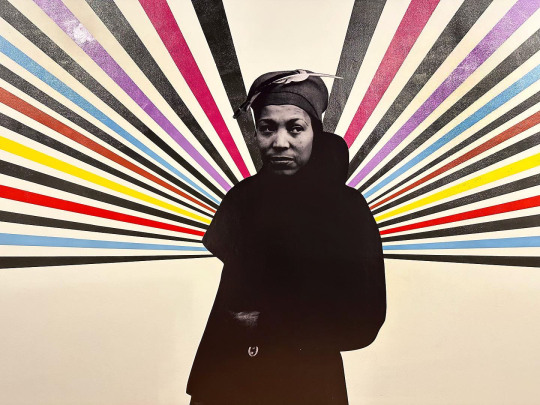

Currently at the University of Florida’s Contemporary Art Museum is Rico Gatson: Visible Time. The exhibition includes a collection of the artist’s paintings and works on paper, video works from 2001-present, and a life size mural of author Zora Neale Hurston.
From the museum’s website about the exhibition-
For more than two decades, Brooklyn-based artist Rico Gatson has been celebrated for his vibrant, colorful, and layered artworks. Inspired by significant moments in African American history, identity politics and spirituality, his oeuvre includes images of protests and longstanding injustices—touching on subjects like the murder of Emmett Till, the Watts Riots, and the formation of the Black Panthers—as well as dynamic abstract geometries that celebrate Pan-Africanist aesthetics and Black cultural and political figures.
About the mural, Zora III, commissioned by the museum (pictured above)-
Zora Neale Hurston was an American author, anthropologist, and filmmaker. She portrayed racial struggles in the early-1900s American South and published research on hoodoo (a set of spiritual practices, traditions, and beliefs created by enslaved Africans in the Southern U.S.). The most popular of her four novels is Their Eyes Were Watching God, published in 1937. Born in Notasulga, Alabama, Hurston grew up near Orlando, in Eatonville, Florida, incorporated in 1887 as one of the first self-governing all-black municipalities in the country. Despite her landmark achievements, Hurston died penniless and in obscurity in 1960-her novels and other writings largely unknown, until they were single-handedly rescued by novelist Alice Walker in 1975. Through his wall painting Rico Gatson extends the monumental impact of Hurston’s legacy-and Walker’s- into a visual arena reminiscent of the Mexican Muralists and hand-painted cinema signs.

("Untitled (Seven Panels)”, 2022 acrylic paint on wood, in seven parts)
From the museum’s wall plaque about the above paintings-
According to catalog contributor Mark Fredricks, Rico Gatson’s “panel paintings” resemble “a musical framework.” Arranged together along a single wall, the “rhythm” animating their colorful compositions and their “uniformity of structure” suggest, anthropomorphically speaking, musicians in a jazz combo. One of the many ways in which Gatson draws on music as a lasting influence in his art, his seven panels approximate what legendary jazz player Albert Ayler described as “the healing force of the universe,” but in three dimensions.

“Don” 2022, Color pencil and photo-collage on paper
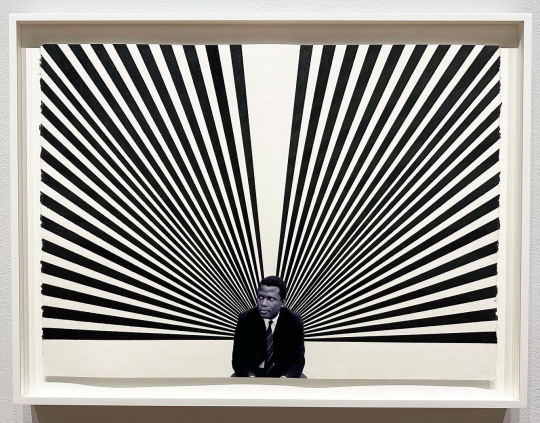
“Sidney” 2022, Color pencil and photo-collage on paper

“Miles #2″ 2022, Color pencil and photo-collage on paper
Below are images are from Four Stations, one of the five moving image works in the exhibition. For this work, Gatson traveled to Money, Mississippi and took handheld footage along the trail of places and events that led to the lynching of 14-year-old Emmett Till.


On one of the smaller screens is Gun Play, 2001, a film collage that mixes sequences from Foxy Brown and The Good, the Band and the Ugly, combining them together with kaleidoscopic effects.
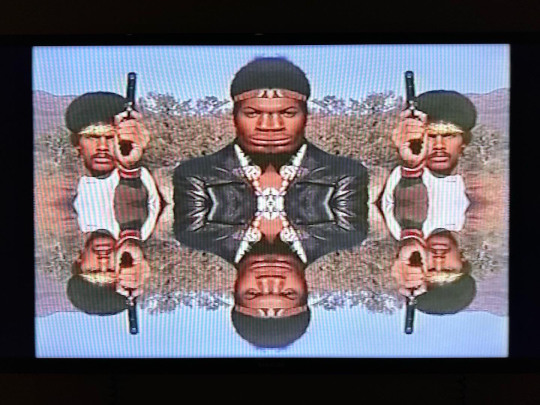

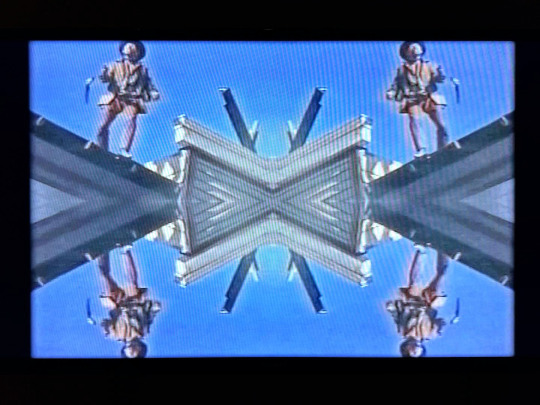
This Thursday 7/27/23, the museum will be showing Spike Lee’s Do the Right Thing, the last of the three films chosen by Gatson to accompany the exhibition.
The exhibition will close on Saturday, 7/29.
#rico gatson#ira usf#usf contemporary art museum#tampa art shows#art#art shows#florida art shows#video and film#painting#sculpture#zora neale hurston#film collage#emmett till#murals#do the right thing#spike lee
5 notes
·
View notes
Text
'Mission: Impossible – Dead Reckoning Part One director Christopher McQuarrie addresses Barbie and Oppenheimer's negative impact on his film's box office. Tom Cruise returns as Ethan Hunt for the seventh film in the long-running action franchise, which earned strong reviews from critics. Despite strong reviews, however, the latest sequel has struggled financially, with excitement around the "Barbenheimer" phenomenon ultimately eclipsing Hunt's latest adventure.
Now, in a recent interview on the Empire Spoiler Specials podcast, McQuarrie addresses Mission: Impossible – Dead Reckoning Part One's box office defeat at the hands of Barbie and Oppenheimer.
McQuarrie chooses not to focus on his own film's financial shortcomings, but instead expresses his excitement for fellow filmmakers Greta Gerwig and Christopher Nolan and what the success of their movies means for cinema. Check out McQuarrie's full comment below when asked about the "tsunami" that is Barbenheimer:
“I couldn’t be more delighted. We meant what we said when we went out and bought those tickets. I meant what I said when I went on Twitter – my last ever post on Twitter – and said, ‘Go pink or go home.’ Could not be more thrilled for Margot [Robbie], who I think is an extraordinary talent, a mega-star. And I’m delighted for the validation that the movie gives to that part of Margot that is that mega-star. And I hope the lessons learned from that are applied. Couldn’t be more thrilled for Greta.
“Chris Nolan… you want to talk about between a rock and a hard place? You want to talk about a guy whose movie was a three-plus hour R-rated drama with nudity that leaves you feeling quote-unquote 'devastated’. That’s a tough sell. That’s one helluva marketing strategy. And he won. He called it like Babe Ruth and he won. God bless him. Congratulations. That’s fantastic.
“And it’s a triumph for original movies. It’s a triumph for films that are not sequels. And in the case of Oppenheimer, a drama. What movies used to be all the time. Tom and I just look at each other all the time like, ‘Man, it’s just about quality.’”
Why Barbenheimer Beat Dead Reckoning Part One
When it comes to movies, this year has been an interesting wake-up call for several big-budget action franchises. After disappointing performances from Fast X and Indiana Jones and the Dial of Destiny, Mission: Impossible 7's performance strongly suggests that audiences might be craving new things instead of additional installments in long-running franchises.
That being said, Mission: Impossible 7 has been a hit with those who saw it. Unlike Fast X and Indiana Jones 5, the new Cruise film hasn't been really divisive in terms of its quality. Really, then, Mission: Impossible 7's underperformance can seemingly mostly be boiled down to bad timing. The film was only able to play for less than 2 weeks in IMAX, a format that has traditionally been strong for the franchise, before Oppenheimer took over all the screens due to pre-existing agreements.
The lack of premium large format screens was undoubtedly a major blow, but excitement for both Barbie and Oppenheimer was also way higher than really anyone had anticipated. Both films have broken records and shot past projections. In hindsight, clearly, Paramount should have moved Mission: Impossible – Dead Reckoning Part One's release date, and it may have enjoyed a much more profitable run.'
#Mission Impossible Dead Reckoning: Part One#Christopher McQuarrie#Tom Cruise#IMAX#Greta Gerwig#Barbie#Christopher Nolan#Margot Robbie#Fast X#Indiana Jones 5#Barbenheimer
3 notes
·
View notes
Text
Why Edius X and Edius X Pro are the go-to video editing software for professionals
Edius X and Edius X Pro are the latest versions of Grass Valley's professional video editing software, designed to meet the needs of filmmakers, video editors, and content creators. Here are a few reasons why these software programs have become the go-to choice for professionals:
High performance: One of the main reasons why professionals choose Edius X and Edius X Pro is because of their high performance. The software is optimized for speed and efficiency, allowing you to edit and process large amounts of video footage quickly and smoothly.
Wide format support: Edius X and Edius X Pro support a wide range of video formats, including 4K and 8K resolution, making them ideal for working with high-quality footage. The software also supports a variety of camera formats, including Canon, Panasonic, and RED, so you can work with footage from any device.
Advanced features: Edius X and Edius X Pro offer a range of advanced features that make video editing easier and more efficient. These include support for HDR color grading, advanced audio editing tools, and support for GPU acceleration, which allows you to take advantage of the power of your graphics card to speed up rendering and playback.
Customization options: Edius X and Edius X Pro offer a range of customization options, allowing you to tailor the software to your specific needs and workflows. This includes support for custom keyboard shortcuts, customizable layouts, and the ability to create and save custom effects and presets.
Flexibility: Edius X and Edius X Pro are designed to be flexible and adaptable, making them suitable for a wide range of projects and workflows. The software allows you to work with a variety of media, including video, audio, and graphics, and it integrates seamlessly with other tools and software, such as Photoshop and After Effects.
Overall, Edius X and Edius X Pro are highly respected and widely used video editing software programs that offer a range of advanced features and customization options for professionals. Whether you're a filmmaker, video editor, or content creator, these software programs can help you achieve the high-quality results you need to succeed in your work.
EditPoint India
2 notes
·
View notes
Text
The Menu
It’s best to go into The Menu knowing as little about it as possible. As such, if a pitch-black comedic (somewhat macabre) condemnation of foodie culture (from inside the kitchen and out of it) that also serves as a searing indictment of artists who forget why they’re even creating to begin with is your bag, then you’ll probably love The Menu. That’s all you need to know. Come back after.
You’re back? You don’t care about spoilers? Intrigued but too turned off by the darker elements teased? Let’s go.
The easiest way to describe The Menu without getting *too* deep into spoiler-territory is: “What if David Fincher, director of Fight Club and Gone Girl, directed his own version of Ratatouille?” Granted, The Menu is bereft of Ratatouille’s more outrageous elements. For instance, you won’t find an anthropomorphic rat hiding beneath Ralph Feinnes’ chef’s hat controlling his every move (though, frankly, the movie reaches a point eventually where even that wouldn’t have phased me). What the two share, however, is a common spirit expressed in often wildly disparate ways.
If you’re like me, the trailer gave the distinct impression the whole affair eventually devolves into a gastronomic riff on The Most Dangerous Game. Suffice to say it does not. The flavor of The Menu’s is one that slowly unfolds and doesn’t fully reveal the depth of itself until well until you realize things have sailed past the point of no return. Because for as much as The Menu’s marketing wants you to think this is some kind of slow-roasted horror movie, it’s really something closer to a modern day fable with a grounded premise but with sufficient splashes of absurdity to make you question the nature of its depicted reality.
Caught up within this smorgasbord of surreality is Margo (Anya-Taylor Joy). She’s a nonplussed plus-one who finds herself dragged along by her foodie culture-obsessed date, Tyler (Nicholas Hoult), into the pomp and circumstance of an evening at Hawthorne, the isolated, island-bound hyper-exclusive restaurant led by the world-renowned Chef Julian Slowik (Ralph Fiennes). This isn’t the kind of high-level restaurant where you can simply order the world’s most expensive steak to pair with a couple glasses of a 15-year-old cabernet. No, the food at Hawthorne must be An Experience. Forget bread as an appetizer. You’ll stare at the concept of bread on an empty plate right after you’ve eaten a seaweed crisp covered in fake food snow and you’ll be in awe as you do so. That’s the idea, at least. Save for Margo, everyone’s come to Hawthorne in order to flaunt something, be it status, money, idol worship. But as the courses become increasingly unhinged, the clearer it is that Chef Slowik has become tired of chasing Michelin stars and has far darker intentions for his guests.
What unfolds is a story that takes aim at chef and guests alike. At what point does passionate fandom become obsession? At what point do successful creatives who achieve the height of fame and success lose their way? What good is achieving that success if it ultimately comes at the cost of losing sight of the thing that made you happy in the first place? This is where it becomes truly of a piece with Ratatouille: Both films are about remembering what’s important when both creating and consuming art. The Menu just has 100 percent more stabbings.
Director Mark Mylod and writers Seth Reiss and Will Tracy have their knives out for everyone from sycophants to cheaters to smarmy tech bros, too. To say nothing of the utter contempt it has for the way kitchen culture has transformed into a near cult-like formation, both from inside the kitchen and out even as these chefs devolve into something resembling self-parody.
The Menu is largely an indictment of the ways fame and fandom have become something of an ouroboros slowly eating itself alive, but the filmmakers are just as angry at the ways modern society nourishes people who had little beyond their own perception of inherent value. Don’t mistake this for some finger-wagging missive, though. Even in the moments when the subtext becomes text, it’s handled with panache and humor and never feels preachy.
Even ignoring the thematic elements, though, it’s a joy just to watch the truth of this mystery slowly come into full view. It never achieves Agatha Christie levels of intrigue, but it’s a playfully tense affair that is happy to subvert expectations at nearly every turn.
If I have a single complaint, it’s that the script seems to run out of ideas on what to do with at least one or two members of its ensemble, leading to a violent encounter that feels borderline obligatory if only because the writers couldn’t figure out how else to inject some needed tension into a particular sequence.
Otherwise, this was a marvelous surprise that delighted my palette with every bite and I’ll happily take seconds.
Oh and it must be said that The Menu also features what may be the single best-looking double cheeseburger ever seen in a movie.
5 notes
·
View notes
Text
A thing I have seen coming since the first Korean BL series (that was actually called a BL, bc my god is there a divide in the Korean filmmaking scene between queer films and BL...people get heated) was announced, was that this would open the gate to more LGBT rep in regular KDramas. The Korean market will go with the trend of time, and the success of BL has shown producers, that it is a valuable variation of the already working formula.
After the immense success of the Semantic Error adaptation from last year, more and more shows, which went into production after SE aired, have been including expicitely queer characters (Love in Contract (tvN), Extraordinary Attourney Woo (ENA/Netflix), Under the Queen's Umbrella (tvN)...and those are just the most recent ones I can think off without looking stuff up).
While there have certainly been a few gay characters in shows over the past ten years or so, only few have had bigger roles, and fewer have had their sexuality been known from the beginning. Only two years ago every single queer side character with the smallest amount of relevance to the plot seemed like a novelty and suddenly we have so many at the same time!
With this new wave in 2022 most of those characters might still be young gay men, but the fact that they are allowed to expicitely exist on Korean TV (even having same-sex relationships which do not end in tragedy!) while still not being reduced to their gayness alone is a huge step for KDramas! Recently I feel like every second new Kdrama I hear about has gay characters in small or large roles and it feels great. And all of this was really only possible because BL has proven to be a profitable variant of the usual Korean storytelling format that is KDramas and thus given the industry that last push it needed to start portraying queerness as a part of the everyday.
Having observed the slow acceptance over the past ten years made me slowly tired, but then witnessing the new boom got me excited again to watch new dramas and follow the changes this new delevopment will bring with it!
#midnight thoughts#not really midnight#but whatever#Just over the past few weeks every drama I have started suddenly had queer people in it#and that delighted me every single time#it feels like this could have a good influence on the perception of queer people in korea#especially the way the portrayals work right now#I would need to write half an essay to explain why#maybe I'll do that at some point#but yeh#these were the thoughts lol
2 notes
·
View notes
Text
Great read.
The lack of support from Heard’s industry peers, in particular, is telling, given that it was only five years ago when Hollywood rallied around survivors of sexual assault and harassment following the bombshell accusations against producer Harvey Weinstein. A-list actors, filmmakers, and entertainers alike—largely women, but also some men—seemed comfortable and even eager to discuss the abuses they had endured working in Hollywood and encouraged other survivors across career fields to share their stories. Some even apologized for working with predatory men in the past, like Woody Allen, Roman Polanski, and Weinstein. Their most notable collective effort was the formation of Time’s Up, a non-profit organization that was originally founded as a legal fund for victims of workplace harassment but has taken on a much more confusing mission in the years following.
5 notes
·
View notes
Photo
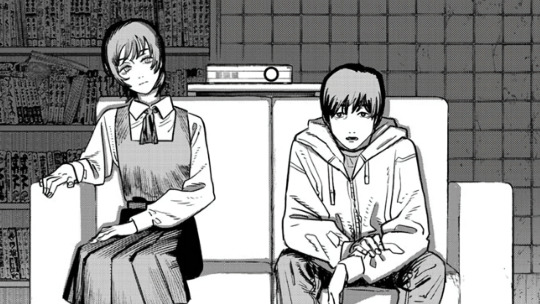
Goodbye, Eri REVIEW
Every story needs a pinch of fantasy.
Oftentimes, that’s what really hooks me. Many of my favorite stories from manga, movies, games, anime, and other formats are compelling because they deal with real human emotions—because you can see yourself in the characters and empathize with their struggles and successes. But the stories that I like the best are the ones that pair those feelings with impossibilities like incredible powers, strange worlds, terrifying monsters and so on. A fantastic element can make the emotions involved seem incredible, too.
Tatsuki Fujimoto, author of the one-shot manga Goodbye, Eri and—more famously—Chainsaw Man, has a talent for this combination of reality and fantasy. You can see it in all of his works. Alongside the craziness of superpowers, demons, or immortal vampires is a desire to depict people as they really are. Fujimoto’s characters are often awkward. Their goals may not pan out, and their dedication waxes and wanes. Even in a world of the supernatural, these characters are easy to identify with.
Goodbye Eri is the story of a middle school boy named Yuta who makes a film about his mother’s death using real footage from their lives. The film’s surprising twist ending is poorly received, causing him to be mocked by his classmates. From there, spurred on by Eri, a pushy girl who saw a spark of promise in his film, he sets out to learn more about filmmaking and create a movie that will blow his class away.

Every panel of the manga represents a shot taken by Yuta’s smartphone. Fujimoto uses the framing device of a documentary film to constantly play with the reader’s expectations, making it unclear what’s real, what’s staged, and what’s been left out. This story’s pinch of fantasy is given to us in the form of this uncertain truth, with characters—who have usually “watched” the movie up to the point that the reader has at that point in time—correcting the sequence of events or adding additional information that reframes what we’ve seen. In the wake of these constant shifts in the established facts, the audience is generally forced to take everything they’re told at face value, making for one heck of a roller coaster ride.
Frankly, because Goodbye, Eri was released not long after Fujimoto’s other recently well-received one-shot, Look Back, I didn’t expect too much from it. Look Back struck such a chord with me that I thought it would be impossible for Fujimoto to make lightning strike twice in a row. But I was mistaken—even when rereading it to write this review, I found myself just as emotional as I had been the first time I read it. It’s interesting, touching, heartwrenching and in the end—to steal the manga’s own words—cathartic. Fujimoto has an incredible talent for short stories, and I hope he continues to make more one-shots even with Part 2 of Chainsaw Man on the horizon.

Even if he’s destined to continue making serialized comics, his talent won’t go to waste. Goodbye, Eri, though mimicking a film, makes great use of the medium of comics. Not afraid to spend several pages on simply boxed panels of a boring scene or even a few of complete darkness, Fujimoto is willing to take the time and space necessary to give his story a sense of timing—which is part of what makes it work so well. Fujimoto gives you just enough time to chew on what you’ve seen before moving along, which is something that can be difficult to do in a medium where the speed is controlled entirely by the reader. As an obvious lover of film, Fujimoto knows the value of timing, and has managed to squeeze it into a normally inert medium to great effect.
While this is intended to be a review, it might read more like an advertisement. That’s because I honestly cannot think of a single negative thing to say about Goodbye, Eri. In the modern era, “meta” stories that mess with continuity and push against the fourth wall can sometimes feel a bit trite. It’s been a long time since the world at large realized those sorts of stories are popular. But Goodbye, Eri manages to avoid the feeling that its shifting narrative is a gimmick, and instead genuinely feels like nothing I’ve ever read before. It hooked me almost immediately and didn’t let me go until I finished it.
I highly recommend Goodbye, Eri to any fan of manga as a medium. There are few stories out there that feel as unique as this one, and I’m incredibly glad that Fujimoto got a chance to stretch his muscles as an auteur before he returns to syndication. If he can put out stories as good as Look Back and Goodbye, Eri back to back, I’ll happily read anything he wants to make from here on.
By Edward Moore
Follow us on Twitter: https://twitter.com/Advent_Seven
Subscribe on YouTube: https://www.youtube.com/user/AdventSevenMedia
See us on Instagram: https://www.instagram.com/advent_seven/
Join our Subreddit: https://www.reddit.com/r/AdventSeven/
Find Us on Facebook: https://www.facebook.com/AdventSevenMedia/
4 notes
·
View notes